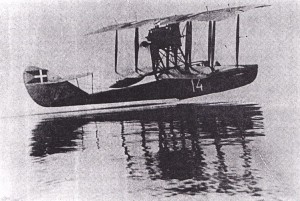 The Royal Naval Dockyard in Copenhagen (Orlogsværftet) started aircraft construction early on. Their first experiences were with repair of the Danish Navys Henry-Farman aircraft.
The Royal Naval Dockyard in Copenhagen (Orlogsværftet) started aircraft construction early on. Their first experiences were with repair of the Danish Navys Henry-Farman aircraft.
Two Donnet-Leveque flying boats were acquired in France in 1913. Although it was considered one of the worlds best aircraft at the time, its performance was poor, and the materials used were below the Naval Dockyards normal standard. The wings started warping less than a year after the boats were acquired, and, as a result, they were hardly ever used. They were designed impirically, and as a result also poor flyers.
Gustav Eiffel had constructed a 2 meter in diameter wind-tunnel under the Eiffel tower, and his laboratory was used to come up with, and test, many new and efficient wing profiles. The Naval Dockyard was working with Gustav Eiffel in Paris at the time, and the Donnet-Leveque aircraft were redesigned with the new Eiffel wing profiles, the wing-area was extended from 21 sq. meter to 3o sq. meter, and the structure was strenghthened and lightened. Only the hull, wing-floats and the engine were left unmodified.
The modified aircraft, now named Maagen II, had a better glide angle, reduced take-off length, and could carry fuel for an additional 2 hours of flight. The cruise-speed was unchanged, despite the larger wings.
Maagen III was constructed in 1914, entirely from scratch, using all the latest scientific methods developed. This was Orlogsværftets first construction designed and built all by themselves. It was an amazing boat, even compared to other flyingboats of its day. The hull was much improved, and shaped like that of a speed-boat’s, with a step in the hull inserted to ease take-off.
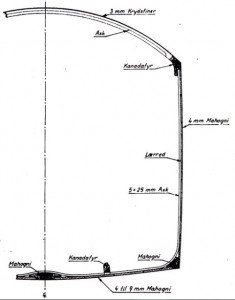 The hull was built from Mahogany, with an internal doped canvas “bag” that would help keep water out. The construction was very similar to modern-day fibre-glass construction. Ash-wood spars were used as “widerons” to increase the strength of the hull width-wise. The hull did not use any formers as we know it, and it can be classified as a very early monocoque construction.
The hull was built from Mahogany, with an internal doped canvas “bag” that would help keep water out. The construction was very similar to modern-day fibre-glass construction. Ash-wood spars were used as “widerons” to increase the strength of the hull width-wise. The hull did not use any formers as we know it, and it can be classified as a very early monocoque construction.
The construction was so streamlined, light and strong, that it could take off from water in less than 15 meter. The Donnet-Leveque had required at least 50 – and that was the improved Maagen II model.
All parts of the aircraft, from power-requirements, strengths, stresses, propeller pitch, wind and water resistance, speed etc. had be calculated beforehand. One of the first such undertakings in the world. With safety margins of 6x and up, Maagen III was a very strong and safe aircraft.
A Curtiss flying boat was acquired during 1917, and the performance of the Danish construction was so superior that the Curtiss aircraft was disposed of after only a few flights.
I have included a photo of Maagen III taking off from water. The grace, speed and quality of this construction is easily seen. It practically takes off witout making a single wave or generating any water-spray. A truly remarkable aircraft.
The Maagen III was part of a series of flyingboats of slightly different size, armament and construction. They all, however, were very similar.
I have started the construction of a model of the 200HP flyingboat – one of the successors to Maagen III. You can follow the construction here.
Specifications
Construction: Wood and fabric
Crew: 1
Wing Span: –
Wing Area: –
Length: –
Speed: 105 km/h
Empty Weight: 730 kg
Full Weight: 975 kg
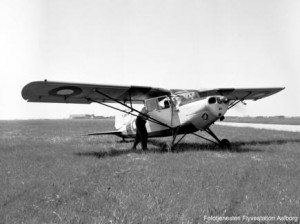 The Royal Danish Air Force procured 10 KZ-VII liaison aeroplanes at Skandinavisk Aero Industri in June 1948. During the initial couple of years they were used as primary trainers, until the deHavilland DHC-1 Chipmunks arrived. One was destroyed in a fire on June 18, 1949 at the Lundtofte Aerodrome. The rest were decomissioned in 1976, after 28 years of service.
The Royal Danish Air Force procured 10 KZ-VII liaison aeroplanes at Skandinavisk Aero Industri in June 1948. During the initial couple of years they were used as primary trainers, until the deHavilland DHC-1 Chipmunks arrived. One was destroyed in a fire on June 18, 1949 at the Lundtofte Aerodrome. The rest were decomissioned in 1976, after 28 years of service.




 06/01/2010
06/01/2010
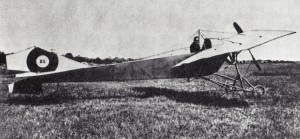
 The second army aircraft type was a Maurice Farman, bought in France in 1913. It was numbered M.F.1. and was very similar to the Maurice Farman owned by Ulrik Birck, but used by the Royal Danish Navy.
The second army aircraft type was a Maurice Farman, bought in France in 1913. It was numbered M.F.1. and was very similar to the Maurice Farman owned by Ulrik Birck, but used by the Royal Danish Navy.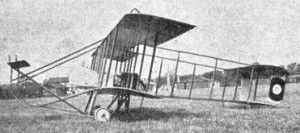 An additional 3 Maurice Farman planes were built under licence at Tøjhusværkstederne in 1917. They were numbered M.F.2 to M.F.4. In general, Maurice Farman aeroplanes were equipped with Renault eight-cylinder 60 horse-power air-cooled engines. However, those build in Denmark had a variety of engines installed. A Chauviere Integrate propeller was mounted directly on the engine’s cam shaft. It was 9.8 feet in diameter, with a 5.2 feet pitch, and revolves at 850 r.p.m. The plane was a pusher configuration, and the engine was placed behind the petrol tank, which was at the rear of the seats.
An additional 3 Maurice Farman planes were built under licence at Tøjhusværkstederne in 1917. They were numbered M.F.2 to M.F.4. In general, Maurice Farman aeroplanes were equipped with Renault eight-cylinder 60 horse-power air-cooled engines. However, those build in Denmark had a variety of engines installed. A Chauviere Integrate propeller was mounted directly on the engine’s cam shaft. It was 9.8 feet in diameter, with a 5.2 feet pitch, and revolves at 850 r.p.m. The plane was a pusher configuration, and the engine was placed behind the petrol tank, which was at the rear of the seats. The Danish Army took delivery of it’s first Henri Farman biplane during 1913. It was manufactured by the Farman factory in Paris and numbered H.F.1. An additional two (H.F.2 and H.F.3) were delivered from the Södertälje Verkstäder in Sweden in 1915, followed by H.F.4, also from the factory in Sweden, in april 1917.
The Danish Army took delivery of it’s first Henri Farman biplane during 1913. It was manufactured by the Farman factory in Paris and numbered H.F.1. An additional two (H.F.2 and H.F.3) were delivered from the Södertälje Verkstäder in Sweden in 1915, followed by H.F.4, also from the factory in Sweden, in april 1917.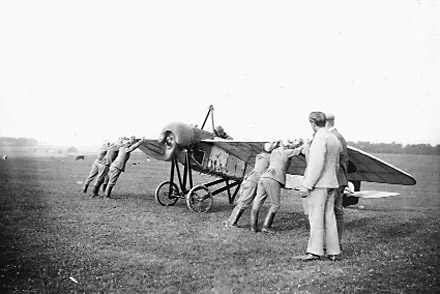 Morane-Saulnier was a reputable company that had many records and world’s firsts. During 1913, the French flyer Roland Garros had crossed the mediteranean in a Morane-Saulnier. The trip took 7 hours and was more than 20 times further than the Bleriot channel crossing. During WWI, it was the first airplane to be fitted with machine guns that could shoot through the propeller arch, thereby creating the world’s first real fighter plane.
Morane-Saulnier was a reputable company that had many records and world’s firsts. During 1913, the French flyer Roland Garros had crossed the mediteranean in a Morane-Saulnier. The trip took 7 hours and was more than 20 times further than the Bleriot channel crossing. During WWI, it was the first airplane to be fitted with machine guns that could shoot through the propeller arch, thereby creating the world’s first real fighter plane.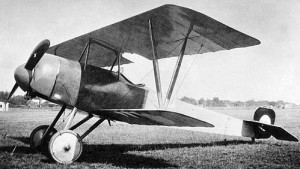




















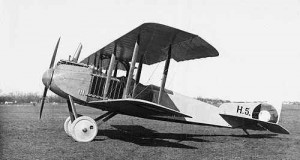 H-maskinen was an aircraft designed and build by Orlogsværftet (Naval Dockyards) in Copenhagen. The first flight was in 1917 and it was in service from 1917 to 1924. A total of 9 were built. It was armed by a Madsen machine gun.
H-maskinen was an aircraft designed and build by Orlogsværftet (Naval Dockyards) in Copenhagen. The first flight was in 1917 and it was in service from 1917 to 1924. A total of 9 were built. It was armed by a Madsen machine gun.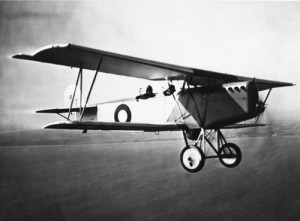
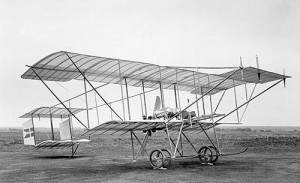
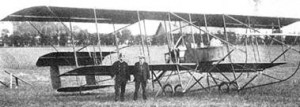
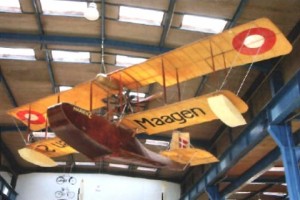











 The Royal Naval Dockyard in Copenhagen (Orlogsværftet) started aircraft construction early on. Their first experiences were with repair of the Danish Navys Henry-Farman aircraft.
The Royal Naval Dockyard in Copenhagen (Orlogsværftet) started aircraft construction early on. Their first experiences were with repair of the Danish Navys Henry-Farman aircraft. The hull was built from Mahogany, with an internal doped canvas “bag” that would help keep water out. The construction was very similar to modern-day fibre-glass construction. Ash-wood spars were used as “widerons” to increase the strength of the hull width-wise. The hull did not use any formers as we know it, and it can be classified as a very early monocoque construction.
The hull was built from Mahogany, with an internal doped canvas “bag” that would help keep water out. The construction was very similar to modern-day fibre-glass construction. Ash-wood spars were used as “widerons” to increase the strength of the hull width-wise. The hull did not use any formers as we know it, and it can be classified as a very early monocoque construction.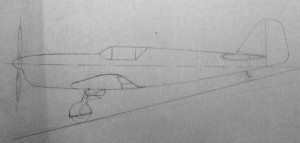

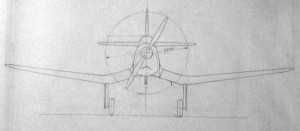
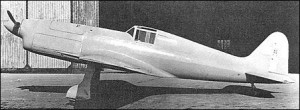
Leave a reply